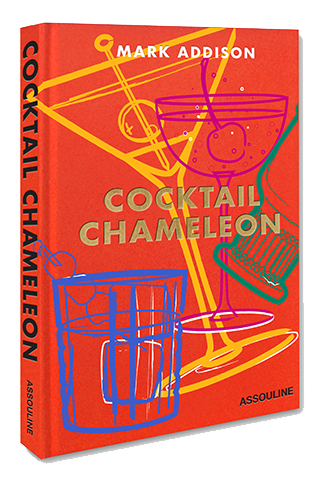Garnishes
While gilding the lily takes things a bit too far, few would argue that a carefully considered garnish adds the perfect final touch to a well-executed drink. Reinforcing the established flavor profile and echoing the established theme with an artful flourish never fail to create a more dramatic and lasting impact.
-
-
Citrus Rosette
Use a very sharp vegetable peeler to remove the peel from the fruit, starting at the top and peeling in a spiral motion going around and down toward the bottom. Tightly roll the long strip of peel around itself, then set it down and let it gradually settle into the shape of a rose. Secure with a toothpick. -
Citrus Twist
This wafer-thin oval of citrus peel is more than a decorative flourishes; it also releases its flavorful aromatic oils into the drink. With a vegetable peeler or sharp paring knife, cut off the bottom of the fruit to make a stable base. With the cut-side down, gently slice off a thin oval of peel, moving the blade away from yourself and out in a downwards direction. Make the cut as shallow and even as possible to get a minimum of white pith. -
Citrus Twist, Knotted
Make a long strip of peel, using a channel knife or the technique described under Citrus Curl. Tie the strip of peel into a loose knot. -
Citrus Wedge
Wedges are usually served perched on the rim of a glass, though they can also be squeezed and dropped into the drink just before it’s served. Slice off the polar ends of the fruit, then slice it in half lengthwise. Now cut each individual half into thirds (for limes) or quarters (for lemons) and slice a small notch partway through the center of each wedge to fit the rim. -
Citrus Wheel
Make this decorative and edible garnish by first slicing off the polar ends of the fruit, far enough down to expose the flesh. To make wheels, continue slicing crosswise into thin slabs about a quarter-inch thick. Cut a small notch into the slice to fit over the rim of a glass. -
Smoked Salmon Rosette
Cut a slice of smoked salmon into a 3-inch by 1-inch piece. Roll about an inch of the slice tightly, to form the center of the rose, and then roll the rest of the slice loosely around the center. Pinch it together from the cut edge, so the more rustic edge represents the petals. Holding the rose from the base, use the tip of a fillet knife to gently peel back the rolled salmon just enough to open up rose. Secure with a toothpick. -
Chocolate Curl
Start with a block of good quality bittersweet chocolate. For thin, delicate shavings, you may need to chill the chocolate for several hours. Using a sharp vegetable peeler, carefully shave along the length of the bar to form curls. Pressing the peeler deeper into the chocolate will result in bigger, more dramatic curls, while drawing it gently across will produce smaller, more delicate curls. -
Maraschino, Luxardo & Amarena Cherries
All of these refer to the preserved cherries that are a classic cocktail garnish. The name maraschino derives from the sour Marasca cherries grown along the Dalmatian coast of Croatia and preserved in a liqueur made from their own juices. Luxardo is an Italian brand of maraschino cherries, renowned for the thick red-black syrup and complex flavor of its preserves. In America, an ersatz version of this, colored with red dye, is made with light-colored sweet cherries. The Amarena is a small wild Italian cherry with a bitter flavor that is also preserved in sweet syrup and often used as a decoration on rich chocolate desserts.





